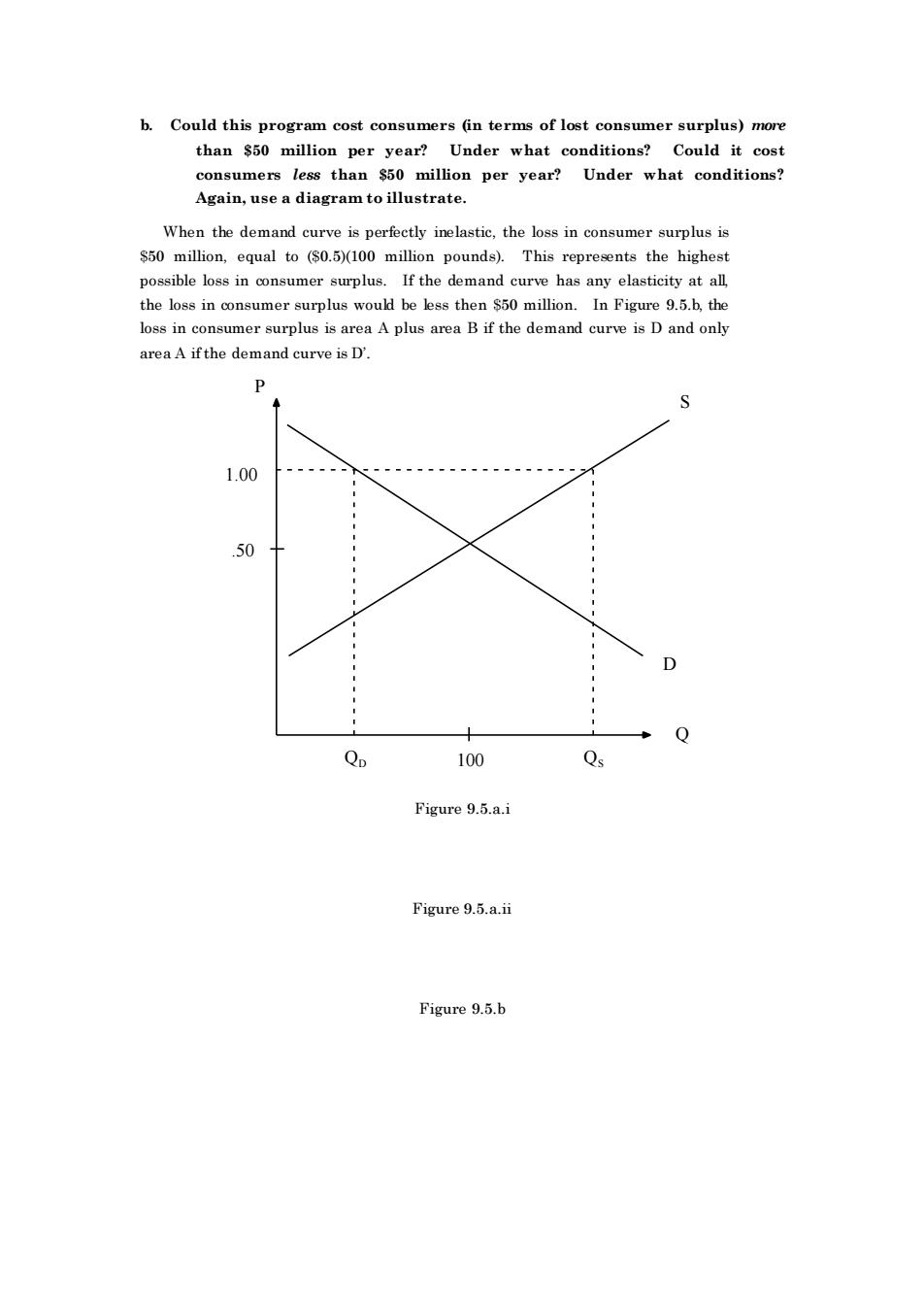正在加载图片...

b.Could this program cost consumers (in terms of lost consumer surplus)more than $50 million per year?Under what conditions?Could i cos consumers less than $50 milli on per year? Under what conditions Again,use a diagram to illustrate. When the demand curve is perfectly inelastic,the loss in consumer surplus is $50 million,equal to ($0.5)(100 million pounds).This represents the highest possible loss in consumer surplus.If the demand curve has any elasticity at all the loss in consumer surplus would be less then $50 million.In Figure 9.5.b,the loss in ner surplu is area A plus area B if the demand curve e is D and only area A ifthe demand curve is D P 1.00 50 0 →Q Q 100 Qs Figure9.5.a.i Figure9.5.a.ii Figure9.5.b b. Could this program cost consumers (in terms of lost consumer surplus) more than $50 million per year? Under what conditions? Could it cost consumers less than $50 million per year? Under what conditions? Again, use a diagram to illustrate. When the demand curve is perfectly inelastic, the loss in consumer surplus is $50 million, equal to ($0.5)(100 million pounds). This represents the highest possible loss in consumer surplus. If the demand curve has any elasticity at all, the loss in consumer surplus would be less then $50 million. In Figure 9.5.b, the loss in consumer surplus is area A plus area B if the demand curve is D and only area A if the demand curve is D’. Q P QD QS 1.00 .50 100 D S Figure 9.5.a.i Figure 9.5.a.ii Figure 9.5.b